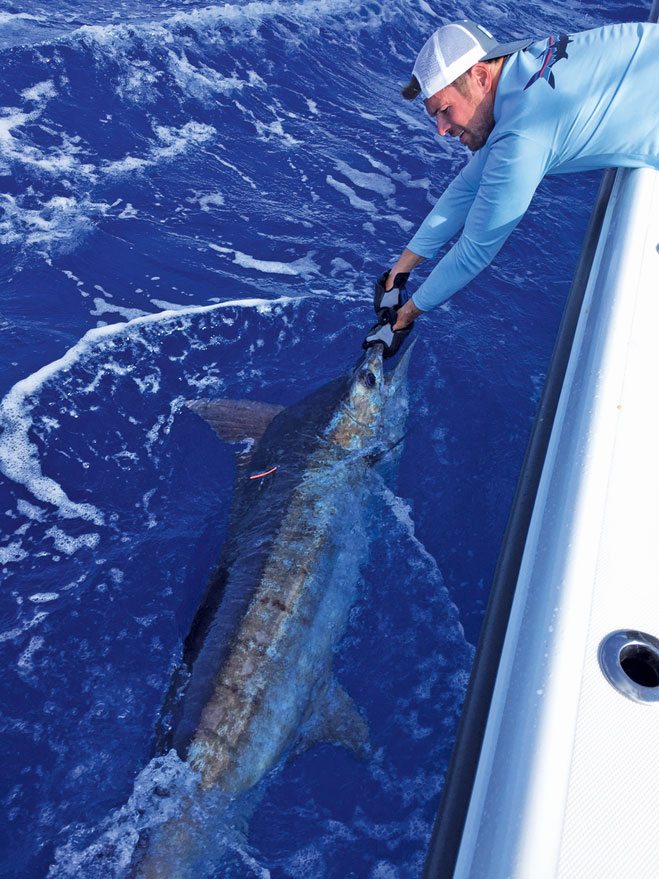It’s the fight, bite, sheer size and strength that makes blue marlin such a beloved billfish.
In fact, no other fish species in the Caribbean has as many tournaments devoted to it as does the blue marlin. Just about every island hosts either a blue marlin tournament or tournament where blue marlin are a prized species. Plus, these tournaments take place year-round as the marlin migrate along the Caribbean island chain. It is love of blue marlin that has led sports fishermen, along with organizations like The Billfish Foundation (TBF), to work together to learn about and conserve this magnificent fish.
Blue marlin, one of four marlin species found worldwide, swim primarily in Atlantic Ocean waters.
Their migratory range is huge, stretching from waters off the Canadian-U.S. border south to Montevideo, Uruguay. However, it is mostly tropical waters where big marlin and lots of them abound. For example, four ‘granders’ or 1000lb plus blue marlin have been caught in Virgin Islands waters. One of these, a 1073-pounder caught in 1982 by Maudie Lopez, is the still-standing women’s all-tackle blue marlin record. Two years ago, 15-year-old Brendan Bernard reeled in a 1005.9-pounder during the Tobago International Game Fishing Tournament, a record for both the event and the nation of Trinidad & Tobago. The current all-tackle world record, a 1402lb blue, was caught off Vitoria, Brazil, in 1992. In terms of sheer numbers, the USVI Open/Atlantic Blue Marlin Tournament set a record in 2007 when anglers aboard 37 boats collectively released 207 blue marlin in four days.
Sport fishermen’s commitment to catch-and-release rather than catch-and-kill of billfish has skyrocketed.
This is due to the realization that maintaining an abundant stock of blue marlin translates into ongoing opportunities for high-quality fishing for locals and visitors alike. In the USVI and the Bahamas, marlin releases in tournaments increased from 12.2 percent in 1981 to 96.4 percent in 2005, according to data provided by TBF. In Puerto Rico, marlin releases in tournaments increased from 0 in 1981, to 99.3 percent in 2005. It is the number of fish released rather than weight of marlin killed that determines a winner. Many tournament organizers also provide bonus points for implanting a research tag in a fish prior to release.

Data from tags, either conventional or the newer pop-up satellite variety, recovered from recaptured fish offer a sneak peek at the migration routes of the often mysterious deep-diving blue marlin, which lives most of its life far from shore. Last year, a total of 363 blue marlin were tagged in the Caribbean. Thirteen were recaptured in locales from Venezuela to Cuba. One of the most notable recaptures happened in 2012 when a 575lb blue marlin caught by Puerto Rico’s late captain, Mike Benitez, was captured little over five months later off the coast of Angola, West Africa.
Sport fishermen can provide helpful information to TBF not only by tagging billfish, but by reporting their releases as well. It costs nothing to report a release, and there is no need to be a TBF member or even to fill out a release card. It can be done online at: www.tagbillfish.org
If anglers catch a fish that’s already been tagged, they can email with the following information: date, location, species, and condition of the fish. Email: www.billfish.org/contact
TBF recognizes captains, anglers and mates that report tagged fish with a certificate and a T-shirt for their time and effort. In addition, these conservation efforts are a great way for sport fishermen to take an active role in helping to protect one of their most treasured catches.






